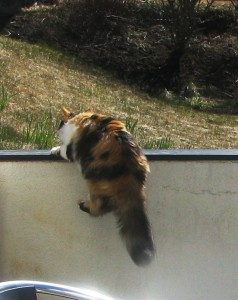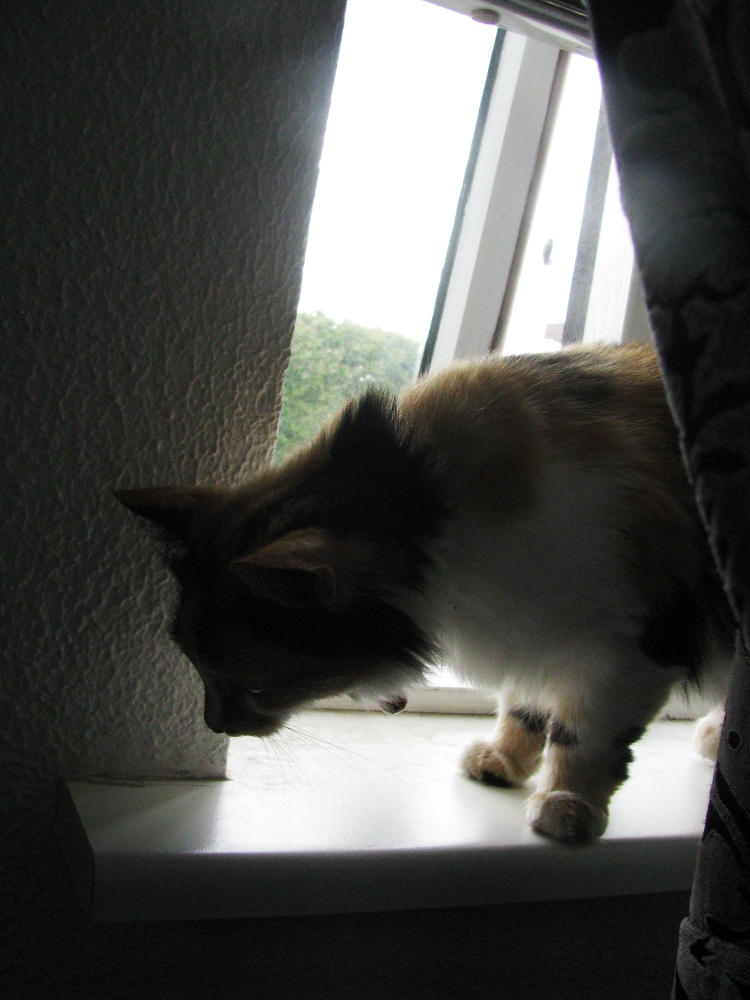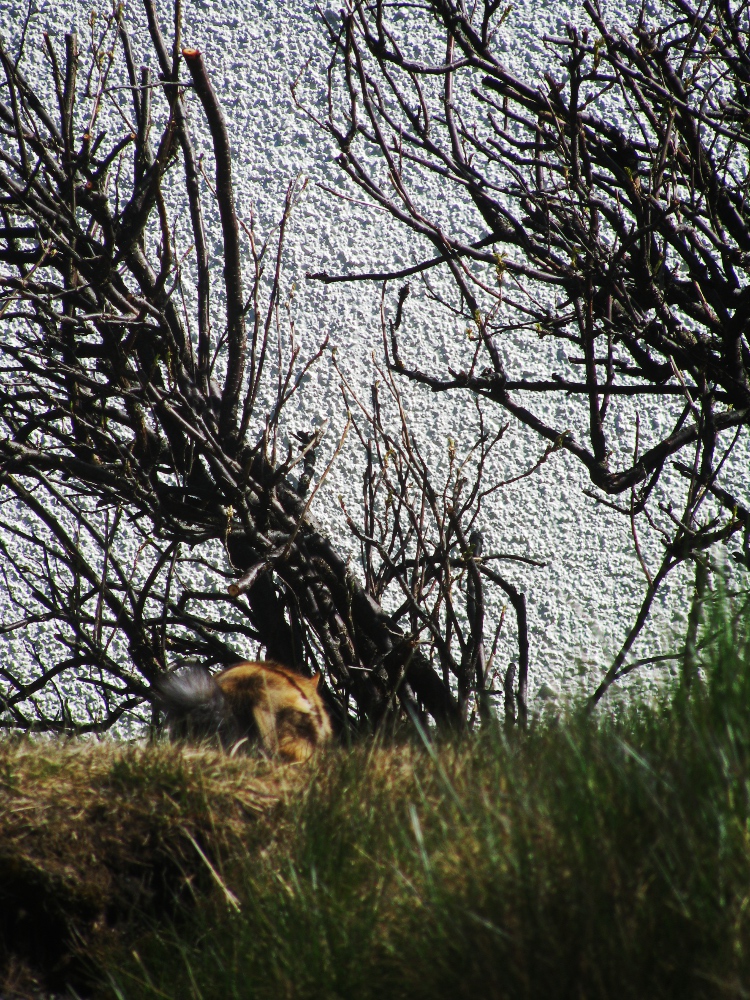You say hello, I say excuse me I’m a woman. Posted by hulda on May 8, 2013 in Icelandic culture, Icelandic customs
 Greetings and goodbyes – the simplest form of any language? Not always and definitely not in Icelandic!
Greetings and goodbyes – the simplest form of any language? Not always and definitely not in Icelandic!
To begin with Icelandic has roughly speaking three different levels of formality in greetings. These overlap generously and often the level you should be using may be difficult to figure out, so let’s look at them and the pitfalls you may encounter. Well, this being Iceland those pitfalls are more like tiny bumps in the road, nothing to worry too much about.
Formal
Góðan dag/góðan daginn (= good day), gott kvöld (= good evening)
These ones are handy to learn because they fit many situations and many people: the bus driver, your teacher, a person who passes you by on the street in the area where you live, Björk, the president. In fact the only people you might not use these with are your close friends and your family, but they’re not completely out of place there either; the reason you would choose some other form of greeting is that there is a wide variety of less formal greetings as well.
The time of the day when these greetings are used is divided around five or six p.m. Góðan daginn goes before (Icelandic does not have a greeting for good morning) and gott kvöld after. You won’t have to check the time before greeting though, no one will care if you’re an hour early or late with either of them. If you want to be absolutely sure, wait for your opponent to greet you first and then reply with the same greeting.
Komdu sæl/l
Here’s where the greetings get one step more difficult. Icelandic, as you know, has three genders – masculine, feminine and neuter – and some greetings follow gender rules. You will greet a man differently than a woman and a group of men differently from a group of women or a mixed group of people.
Komdu sæll (og blessaður): greeting a singular male person.
Komdu sæl (og blessuð): greeting a singular female person.
Komið þið sælir (og blessaðir): for a group of men.
Komið þið sælar (og blessaðar): for a group of women.
Komið þið sæl (og blessuð): for a mixed group.
The level of formality depends on whether or not you use the longer version that includes the blessing. These will be important for you to master if you’re planning to get a job at customer service. It may not always go well to greet someone with the wrong gender because it strongly hints that that’s the gender you’re taking them to be. Still, Icelanders are quite understanding when it comes to foreigners using the language and in a tight spot if you can’t remember the correct form of greeting you can just say góðan dag/gott kvöld and be automatically safe.
Note that although Christian in origin the word blessaður (= blessed) has no religious meaning when used in a greeting. It can be used by anyone regardless of faith or lack thereof.
“Komið þið sæl” says the neighbour’s cat. She really, really seems to want to move in to our place sometimes!
Less formal
All of the above greetings can be shortened, which makes them less formal. They can still be used to greet both complete strangers, employees, one’s own authorities etc. with the only real difference being that they may sound a little bit friendlier than the most formal version. Remember how I told you that Icelanders find it massively rude to even hint at differences in social standing? When in Iceland, don’t just trust your dictionary when it tells you some word is “formal” or “polite”, using it may have the exact opposite effect than what you were hoping for. Friendly is safer than formal.
The shortened versions are:
Daginn!/Kvöldið!
Sæll (M S)/ Sæl (F S)/ Sælir (M P)/ Sælar (F P)/ Sæl (N P).
Blessaður! (M S) Blessuð! (F S)
Informal
The above less formal ones can sometimes count as informal as well, for example sæll is a very typical way of greeting a good friend. There is only one greeting that I can think of that is always only informal and never, ever even the least bit formal:
Hæ. It’s a loan word of the English “hi”, just spelled in the Icelandic way.
Goodbye
With parting words Icelanders are even less fussy about formality. A typical all-time goodbye that goes for any situation at all is
Bless / bless bless!
You can both use and hear both versions, one bless or two bless. They have no particular difference in meaning and can be used for anyone. They are also not tied to gender.
Vertu sæll (M S)/ vertu sæl (F S)/ verið þið sælir (M P)/ verið þið sælar (F P)/ verið þið sæl (N P)!
These goodbyes are similar to the sæll og blessaður -greeting in that they use both gender and singular vs. plural in form. Same rules therefore apply. You can also switch the words around a bit for a more poetic effect: sæl vertu, sælar verið þið etc.
Góða nótt (= good night)
Good night is a parting phrase in Icelandic in the same way as in English: it hints that the both of you are retiring for the night.
Sjáumst! (= see you)
Even though it may sound a very informal way of parting, Icelanders use sjáumst for almost anyone at all granted that they’re actually expecting to see them again. Leaving class is a typical moment for saying sjáumst to both your professor and your fellow students. In fact, since it may take you a week to see your professor again but only a day to see your friends in another class you may say sjáumst to the professor but sjáumst á morgun (= see you tomorrow) to your friends.
And of course there is also bæ. Same thing as with hæ, bæ is a loan word and stems from bye.
Here you can listen to how these greetings are pronounced. 🙂
Takk fyrir mig og verið þið sæl öll! Sjáumst í næstu víku!

Build vocabulary, practice pronunciation, and more with Transparent Language Online. Available anytime, anywhere, on any device.
About the Author: hulda
Hi, I'm Hulda, originally Finnish but now living in the suburbs of Reykjavík. I'm here to help you in any way I can if you're considering learning Icelandic. Nice to meet you!






